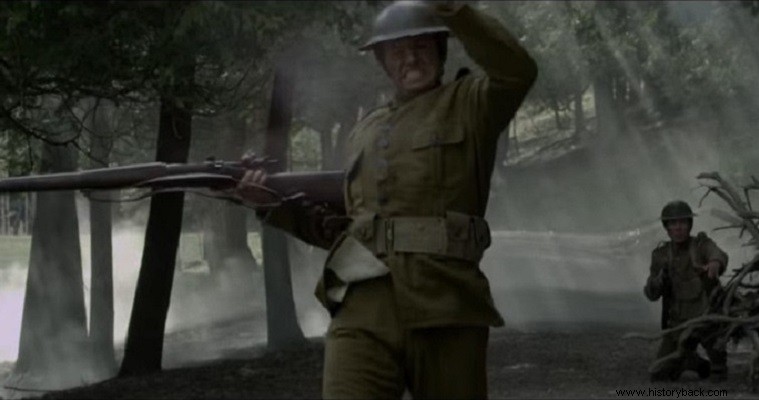
Shortly before 05:00 on November 11, 1918, German, French and British representatives met in a railway carriage to sign the armistice ending the first great slaughter known as World War I. em>
Rejecting the calls of the Germans for an immediate cessation of hostilities, the French marshal imposed the position that the operations should end at 11.00 so that there would be time to inform the units.
Yet this six hour delay cost the lives of almost 3,000 soldiers who died completely needlessly and unjustly just before the end. In total on the last day of the war, on all fronts, almost 11,000 men were killed or wounded.
Although a signed armistice forced the Germans to abandon the French territories still held by some American commanders, they refused to cancel attacks against enemy positions that would be abandoned in a few hours. Some subordinates obeyed them, some others, fortunately not.
Henry Ginder
Among the American units that continued the battle was the 313th Infantry Regiment (SP) of the 79th "Freedom" Infantry Division. “We will continue until 11.00,” ordered Brigadier General William Nicholson.
So on the morning of November 11, 1918 the men of the 313th Infantry Division found themselves fighting just as hard. Among them was the German-born soldier Henry Ginder.
Ginder, 23, was a sergeant. But in July 1918 he was demoted to private because of a letter he wrote to a friend in which he complained about life in the trenches. His demotion also resulted in his fiancee divorcing him.
To wash away the shame in front of colleagues and superiors who, due to his German origin, viewed him with distrust, Ginder emerged as a permanent hero of the regiment. He volunteered for the most difficult missions. Even when he was injured he refused to be taken back but continued to fight.
At 10:44 on the morning of November 11, a messenger arrived at the command post of the 313 SP carrying the order to cease fire in 16 minutes. "Hold your positions and wait," said the order.
Ginder heard the news and decided it was the right time to win back his lost "sardines". In front of the regimental positions was a makeshift German barricade where the men of two machine gun squads waited impatiently for the carnage to end.
Ginder charged with the bayonet against the German position. His colleagues were shouting at him to stop. The Germans called him the same in "broken" English! But he continued. A gust knocked him dead. The time was 10:59 on November 11, 1918.
Ginder was the last American killed in World War I. Ginder regained the rank of sergeant, unfortunately for him, posthumously in 1923.
The Undead Trebushon, Price
Like hundreds of other soldiers on the Western Front Augustin Trebusson he was killed on November 11, just minutes before the end of the war. Before that, the war had claimed the lives of 14 million people, of which 9 million were soldiers, airmen and sailors from 28 countries.
On the graves of the French dead of the last hours the authorities inscribed the date of death on November 10, in a vain attempt to ease the pain of their loved ones. There were many reasons why men continued to fight and fall in those fatal last six hours, such as hatred of the enemy, the ambition of some commanders, poor communications, but also the pleasure of hunting people...>
Besides Ginder or Trebushon, at 10.58 the Canadian George Lawrence Price fell dead by German sniper fire. Trebushon was similarly killed while he was bringing his colleagues the glad tidings of the end of the war and the distribution of rations.
Price was killed at Mons in southern Belgium while searching houses for Germans. Price was shot by some German fanatic. Price was the last British Commonwealth soldier to die in WWI.
Trebusson, 40, a shepherd, family man from central France, had been fighting since 1914. He fought on the Marne, the Somme, Verdun and survived only to be shot in the head by a German sniper at 10.45am. He was the last French dead soldier.
